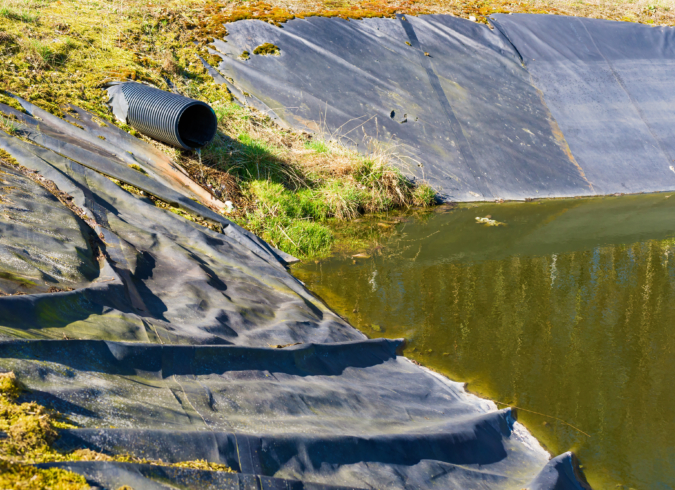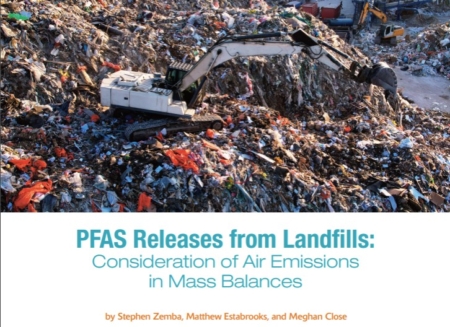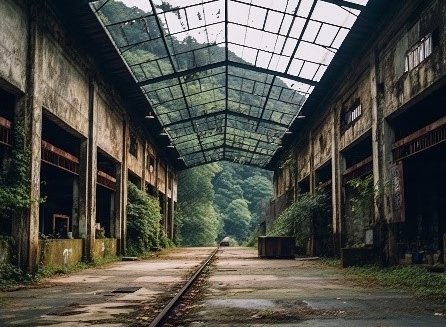Leachate management and disposal can be one of the largest cost line items for an operating landfill in non-arid parts of the country. Additionally, leachate is getting more difficult to dispose of for several reasons, including emerging contaminants such as PFAS and PFOS. So, let’s look at some potential leachate generation causes and common-sense solutions to limit leachate production in the first place.
Stormwater management pond location
Many landfills are constructed to base grades that are below the surrounding natural grades. This can create challenges to convey stormwater away from a newly constructed landfill cell. One solution used by many sites is to excavate a stormwater management pond in the bottom of the excavation just outside the landfill cell footprint. While this may seem like a pragmatic solution, there may be longer term consequences that prove to be costly.
Generally, these stormwater ponds are not sized to manage a particular storm event, and the lowest freeboard edge is typically the top of the adjacent cell berm. Additionally, as the cell fills to higher elevations, the area tributary to the pond increases, sometimes substantially. What can result from large storm events is overtopping of the cell berm with the stormwater having an almost direct connection with the leachate drainage layer on the sideslope of the cell.
In the longer term, the stormwater tends to saturate the underlying soils, creating a groundwater mound. When the next cell is constructed where the pond is located, a large over-excavation may be necessary to achieve stable subgrade for landfill construction. The over-excavation and structural backfill can be an unforeseen condition that leads to a large change order for the contractor.
If there is no way to convey the stormwater away from the adjacent cell, an option is to line the stormwater pond and the adjacent landfill sideslope to keep water out of the landfill. It may also be necessary to operate a temporary automated pump station to remove water from the pond.
Limit run-on/run-in
With few exceptions, landfills should be designed with a perimeter drainage swale to convey water around and away from the landfill. The perimeter swales should be designed to intercept surface water that may be flowing toward the landfill that could end up in the leachate collection system. As the landfill extends above grade, the perimeter swale allows the surface water running off the sideslope to maintain velocity until in the swale, which should limit infiltration through daily or intermediate cover.
A perimeter swale may need to be lined to limit infiltration or to prevent erosion, or both. In very permeable soils, perimeter swales that hold water have the potential to cause sideslope instability of the landfill cell sideslope grades before waste is placed up to the surrounding elevation. If perimeter swales have a slope of 5 percent or more, there may need to be some mechanical protection to limit erosion.
Perimeter swales also provide a place to direct runoff from the perimeter road, thereby providing a more stable road surface.
Grade control to promote runoff
Water needs a gradient to runoff from the landfill. Once the landfill reaches and extends above perimeter grades, it is imperative that the landfill operators create and maintain a gradient with the surface grades of the daily and intermediate cover. The recommendation is to work with a minimum of a 4 percent slope on the top deck to promote runoff of incident precipitation and snow melt. The runoff should be directed to lined or armored down chutes on the sideslopes to limit concentrated water flow on unprotected sideslopes, which generally results in deep erosion rills that require repair.
Additionally, landfill roads should be graded to promote runoff, including grading roads with a crown profile to direct water to roadside swales and other stormwater management features.
Limit size of working face
There are many reasons to limit the size of the working face of an active landfill and limiting leachate production is one of them. The open area of the working face generally allows infiltration of incident precipitation. Therefore, 1-inch of rain on a 1-acre (roughly 200 feet by 200 feet) working face produces about 27,000 gallons of leachate. A 1-acre working face is a very small working face for many landfills, and a 1-inch rain over the course of an 8 or 10-hour day is a common occurrence in many parts of the country.
Cover material selection and application
Daily and intermediate cover materials are a landfill’s front-line defense against leachate generation from precipitation. Many landfills are using on-site soils for cover material based on cost considerations. Few sites have on-site soil that is ideal for use as cover material. Ideal or not, it is critical to strip cover soil before placing additional waste. Cover soil left in place beneath additional waste fill will contribute to lateral movement of leachate (and possibly landfill gas) within the landfill, which may cause breakouts on sideslopes.
Regardless of the soil used, rolling the cover soil with a smooth-drum roller dramatically decreases the amount of precipitation that infiltrates into the landfill though the cover. There are several manufacturers that make single smooth drum rollers that can go up and down slopes as steep as 3 horizontal to 1 vertical (3H:1V).
If there is an option to use material other than on-site soils for daily and intermediate cover, consider using tarps, a tarping machine with lightweight single-use plastic tarp, or cementitious spray-on product. These Alternate Daily Cover (ADC) products rely on proper use to be effective.
Exposed geomembrane
If there are portions of the landfill that will not be receiving additional waste for 2 or more years, installation of a temporary exposed geomembrane cover may make sense. The geomembrane may be a thin scrim-reinforced material with sewn seams, or a heavier 20, 40, or 60-mil geomembrane with heat fused seams. These products are typically available in several colors to address aesthetic impacts. Geomembranes provide the advantages of eliminating most infiltration and providing control of fugitive landfill gas. These advantages create challenges with managing the intensity and volume of runoff and managing landfill gas that may accumulate beneath the geomembrane. The challenges may be limited through proper design. Design considerations also need to include prevention of wind uplift.
Swale liners
Anytime there is stormwater in swales, the water is infiltrating. The longer the water stays on the landfill, the more water is infiltrated to become leachate. Consider lining stormwater swales on portions of the landfill that are dormant long enough to warrant construction of stormwater management features. Liners can consist of geomembranes or other impervious materials designed to line ditches such as SmartDitch. It is critically important to prevent undermining of swale linings for them to function properly, so design them appropriately.
Limit stormwater retention time on/above the waste
Stormwater residence time on the landfill needs to be minimized to limit the volume of leachate produced by infiltration. As mentioned above, the longer water is on the landfill, the more water infiltrates to become leachate. Swales should be constructed with as much slope as possible, and as many downchutes as feasible should be constructed to shed water off the waste as quickly as possible into the perimeter swale and detention basins. Areas where stormwater ponding occurs should be regraded as quickly as possible to eliminate the ponding. Even where liners are installed, the water should not be allowed to pond as the liners may have compromises allowing water to penetrate. Get the water off the landfill as quickly as possible!
Vegetative cover maintenance
Vegetative cover on the landfill’s interim or final cover will provide additional uptake of moisture from the cover soils through evapotranspiration, and more importantly keep the soil on the slopes from eroding. If there are areas where vegetation is stressed or otherwise not able to grow, identify the reason for the distress, repair it, and establish vegetative cover. The vegetation will require periodic mowing to limit establishment of woody growth and to limit potential wildfire hazards. Be careful about letting vegetation get too thick or high in swales and other stormwater conveyance features so that it doesn’t inhibit flow to get the water off the landfill.
Solidify rather than bulk liquid wastes
Finally, for landfills that process wet waste to solidify it before landfilling, be sure to use reagents mixed with the wet waste that will permanently bind the liquid rather than simply absorb it. Absorbing reagents, such as sawdust or auto shredder residue, may hold water until additional waste is placed over it. The additional overburden pressure can squeeze the water out of the absorbent, creating large volumes of leachate. This can not only create unwanted leachate but has potential to create areas of instability within the landfill and may cause leachate breakouts on the sideslopes.
Summary
Most of the discussion above centers around common-sense solutions related to design and operation of a landfill. Due to the complexity of running a landfill site, sometimes these issues get overlooked or ignored. If you want to limit leachate production, stick to the fundamentals and use common sense in your approach. As always, there will be a balance to be struck between cost, ability to execute, and results.
Posted In: Articles
Tagged In: Solid Waste




